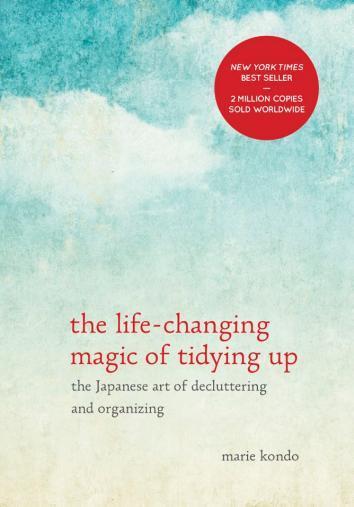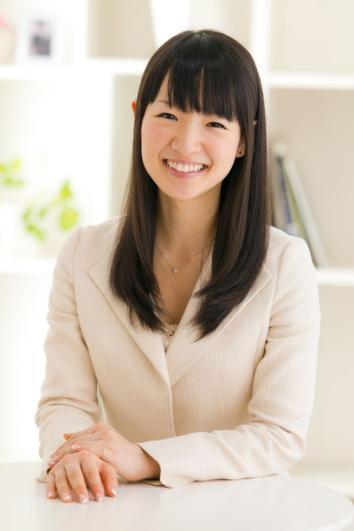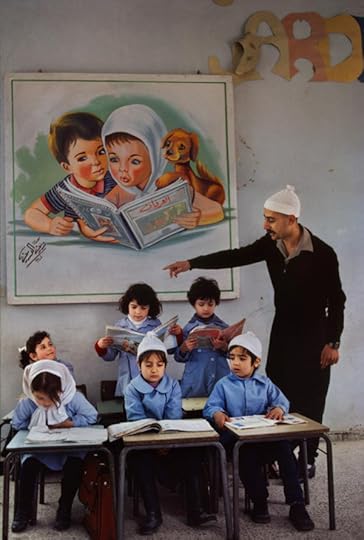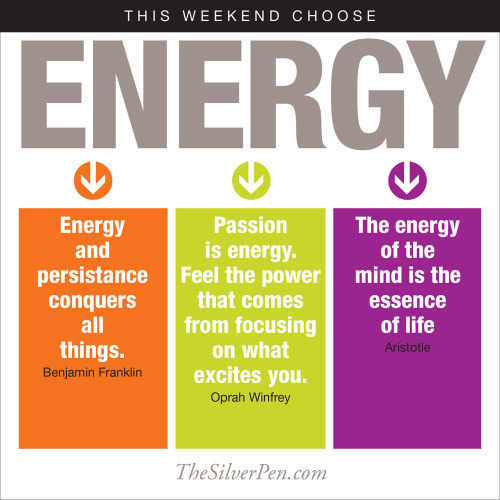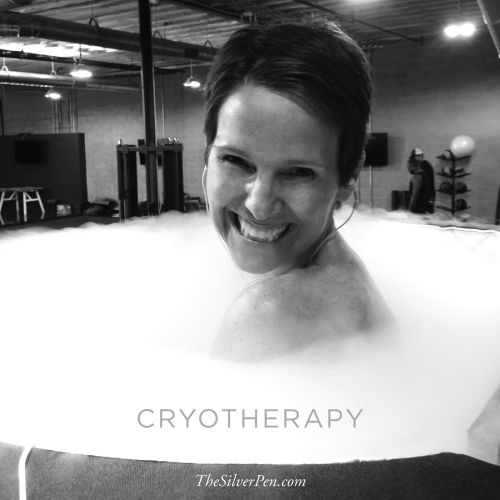Hollye Jacobs's Blog, page 8
January 30, 2015
SABCS 2014: Breast Cancer Trends
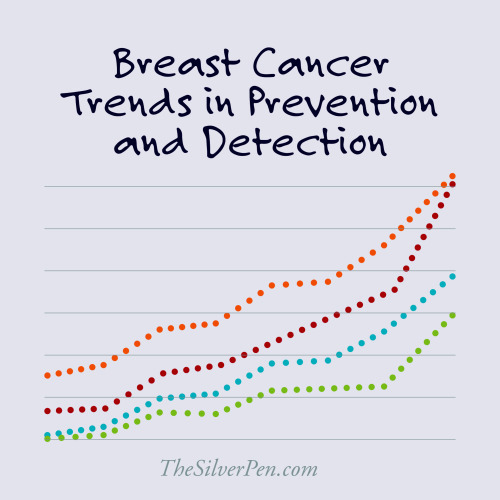 SABCS 2014: Breast Cancer Trends
SABCS 2014: Breast Cancer Trends
Recently, I had the opportunity to do an interview for an online publication about the trends in FBC prevention, detection and treatment that came out of the San Antonio Breast Cancer Symposium held in December. This – as I know you know – is the annual conference during which major outcomes in FBC research are presented. Much of the information is written in medical mumbo jumbo, so I took the liberty of translating a bit for you. Hope that you find it interesting!
What is the latest on detection? A relatively unknown but incredibly important fact about breast cancer is that women with dense breasts are four times more likely to develop breast cancer. They also are much less likely to have their breast cancer detected with a mammogram. This is a big deal. And, it’s estimated that 40-50% of women have dense breasts. At the conference, researchers revealed data showing that using ultrasounds in women with dense breasts potentially increased the ability to diagnose cancers that might not have been seen on screening mammograms alone. While the debate continues about the efficacy of early detection and whether or not it saves lives, this study reiterates the need to talk with your doctor about proper screening and what steps you can take to reduce your risk of developing breast cancer.
What are some trends in breast cancer treatment? Even though breast cancer is commonly referred to as a single disease, the reality is that there are many of different types of breast cancer. Yes, they all start in the breast, but after that? Well, tumor cells have their own agendas. Triple-negative breast cancer is a particularly aggressive type that is typically difficult to treat, although it can often be treated successfully if caught early. An interesting study revealed that people with triple-negative breast cancer may benefit from taking a combination of the drug carboplatin and standard chemotherapy prior to surgery. Often people are given chemotherapy before surgery to help shrink tumors so that they can be surgically removed. For women with metastatic breast cancer, the FERGI Phase II study provided an interesting (and hopeful!) finding. Researchers found that adding something called a PI3K inhibitor to treatment may delay the cancer’s progression. It works by blocking a pathway often associated with cancer growth. This study was especially effective in women with both estrogen and progesterone receptor positive cancer.
Is there anything new on prevention?
An interesting study found that breastfeeding does reduce the risk of breast cancer. Further, results showed that even if women breastfed for only a short time, that they still received the benefit.
And, on the food front, one study that surprised me was the Women’s Intervention Nutrition Study (WINS). This study began in 1994, and looked at the effect of a low-fat diet on breast cancer risk reduction and risk of recurrence. The findings showed that eating a low fat diet for five years did not improve survival in the overall population of women. But those with hormone receptor negative breast cancer did see a 54% improvement in overall survival. In other words, women who had estrogen and progesterone negative tumors who were on a low fat diet for five years lived an average of 1.9 years longer than women who did not make changes to their diet. The bottom line: doctors and researchers agree that anyone who has had breast cancer needs to focus on maintaining a healthy weight to reduce the risk of the cancer returning.
The post SABCS 2014: Breast Cancer Trends appeared first on The Silver Pen.
January 26, 2015
The Life-Changing Magic of Tidying Up Review
The Life-Changing Magic of Tidying Up Review
This year we are moving into a smaller house. We are “right-sizing” as we are calling it. We currently live in a home that is larger than we need. Now, this is a real blessing, I know. A first-world problem, if you will. Though it has been an incredibly difficult decision (because I loooooove our home), it is the right thing to do.
Part of right-sizing includes de-cluttering, cleaning out. Enter “The Life-Changing Magic of Tidying Up” written by Marie Kondo, a Japanese personal tidying expert (she doesn’t like to call herself an “organizer”). She caught my attention a) because her book is everywhere and b) with her radical approach and phenomenal success rate. She claims that her relapse rate among clients she’s personally helped is zero. Literally zero.
Ms. Kondo’s decluttering theories are unique, and can be reduced to two basic tenets: Discard everything that does not “spark joy,” after thanking the objects that are getting the heave-ho for their service (LOVE this!); and do not buy organizing equipment — your home already has all the storage you need.
Before you recoil, keep going. The title of this book is SPOT-ON! If you read and apply her principles, your life WILL be changed. Seriously. I am learning it first-hand!
To understand her method, forget everything you think you know about decluttering. This method is extreme, but it really. does. work. Here are some basics of her approach:
Discard first, store later. Kondo believes that you can’t organize clutter. The first step is to get rid of everything you don’t need.
Tidy a little a day and you’ll be tidying forever. This was a biggie for me. I am a serial tidier. However, Ms. Kondo says that “tidying is a special event. Don’t do it every day.” If you do the job right, once and completely, you won’t have to do it again. Love that!
Storage experts are hoarders. “Putting things away creates the illusion that the clutter problem has been solved.” But organized clutter is still clutter. This was another area in which I was slightly delusional.
Sort by category, not location. “Tidying up by location is a fatal mistake.” Sort by category instead, in the following order: clothes, books, papers, miscellany, and then things with sentimental value.
Ask yourself: “Does this spark joy?” If it does, keep it. If it doesn’t, get rid of it. Now, important documents are not included, but there are fewer of these than you’d think.
Never pile things. Vertical storage is the key. Stacking has two problems: you can stack much more than you can store vertically (not a plus if you’re aiming for clutter-free), and stacking is hard on the things at the bottom.
Learn how to fold. Kondo is adamant about proper folding technique, which enables you to store things standing up rather than laid flat. She advocates to fold everything into a long rectangle, then fold that in upon itself to make a smaller rectangle, and then roll that up into a tube, like a sushi roll. Set these upright in your drawers. I had a hard time visualizing her technique from the book but this video helped. This method is amazing for people like me who are particularly visual because you can see everything at a glance, much more effectively than you can if your clothes are hanging or vertically stacked. And last but not least (something I thought particularly unique and wonderful), Ms. Kondo urges: Thank your stuff, it’s been working hard for you.
Marie Kondo. Isn’t she adorable?
The post The Life-Changing Magic of Tidying Up Review appeared first on The Silver Pen.
January 25, 2015
The Power of Education
While roaming around the internet this morning at 5 (my wake=up time these days), the ultimate Silver Lining was stumbling across Steve McCurry’s images. The true Power of Education is evidenced in this extraordinary photo essay by renowned photographer, Steve McCurry. In these images, McCurry takes us around the globe to offer powerfully striking images of children in their learning environments. As Nelson Mandela said,
The power of education extends beyond the development of skills we need for economic success. It can contribute to nation-building and reconciliation. Our previous system emphasized the physical and other differences of South Africans with devastating effects. We are steadily but surely introducing education that enables our children to exploit their similarities and common goals, while appreciating the strength in their diversity.
A question: Who was the most impactful teacher in your life?
Mine was Mr. Soverign who taught social studies at Test Middle School in Richmond, Indiana. He simultaneously scared the bejesus out of me and inspired me to love China, which was a feat for a little girl in the middle of Indiana!
Garze, Sichuan, China
Marseilles, France
Omo Valley, Ethiopia
Abu Dhabi, United Arab Emirates
Gujarat, India
Bamiyan, Afghanistan
Peru
Kegalle, Sri Lanka
Lebanon
The post The Power of Education appeared first on The Silver Pen.
January 22, 2015
This Weekend Choose: Intellect
January 21, 2015
SABCS 2014 The SOFT Trial
 Each year, there are reams of fascinating research findings that are presented at the SABCS. To choose the most significant one is definitely a challenge. However – since I’ve been asked! – I would say that the most interesting results came out of the SOFT (Suppression of Ovarian Function Trial) trial.
Each year, there are reams of fascinating research findings that are presented at the SABCS. To choose the most significant one is definitely a challenge. However – since I’ve been asked! – I would say that the most interesting results came out of the SOFT (Suppression of Ovarian Function Trial) trial.
Let me give you a little background here. As I’m sure you already know, in hormone-receptor-positive breast cancer, estrogen can stimulate the growth of breast tumor cells. We don’t want that now do we? So, one goal of treatment is to prevent estrogen from helping the breast tumor cells grow.
After a premenopausal woman has surgery (e.g., a lumpectomy or mastectomy), to reduce the risk of the cancer from recurring, the traditional treatment for women diagnosed with early-stage hormone-receptor-positive breast cancer has been hormonal therapy called Tamoxifen. Taken in a pill, this drug binds to estrogen receptor and blocks the action of estrogen, so that the breast tumor cells that need estrogen to divide stop growing and die. It also lowers the overall amount of estrogen in the body. Good stuff, right?
Well yes, BUT researchers wanted to see if they could do even better to prevent breast cancer recurrence (love that as a former breast cancer patient myself!).
This is where the SOFT trial comes in. Researchers were curious about whether adding ovarian suppression to either Tamoxifen OR Aromasin (chemical name: exemestane) to see how well they work compared to Tamoxifen alone in treating premenopausal women who have undergone surgery for hormone-responsive breast cancer.
Please allow me to explain a few things first. As an aside, I know that there is so much background information that comes in this explanation, but bear with me because it will all make sense shortly.
Ok, so ovarian suppression uses medical interventions (e.g., drugs or surgery) to stop the ovaries from making estrogen and thereby preventing a tumor from getting the estrogen that it needs to grow. Ovarian suppression puts women into a state similar to a natural menopause in that it lowers hormone levels and stops menstrual periods.
Aromasin is a type of drug called an aromatase inhibitor that is another option in our never-ending quest to eliminate estrogen in hormone-receptor-positive breast cancer. It works by BLOCKING the enzyme aromatase, which turns the hormone androgen into small amounts of estrogen in the body. What this means is that less estrogen is available to stimulate the growth of hormone-receptor-positive breast cancer cells. Now the key is that Aromasin does not stop the ovaries from making estrogen, so this drug ONLY works when the ovaries are suppressed or – in other words – when women are in menopause.
Still with me? Ok, so back to the SOFT trial. In one aspect of this study researchers looked at the benefits – what they referred to as disease-free survival – of ADDING ovarian suppression to the drug Tamoxifen in women diagnosed with early stage hormone-receptor-positive breast cancer. They also studied ADDING ovarian suppression to Aromasin to see how well they work compared to Tamoxifen alone in treating premenopausal women who have undergone surgery for hormone-responsive breast cancer.
This SOFT trial – which took five years to complete, by the way! – revealed that in premenopausal women diagnosed with early-stage, hormone-receptor-positive breast cancer, the women who got the drug Tamoxifen AND ovarian suppression did better than taking Tamoxifen alone.
Further – and this is the biggie – the medication Aromasin combined with ovarian suppression reduced recurrence risk better than Tamoxifen and ovarian suppression. The group that benefitted the most was women under the age of 35, in other words those who are typically premenopausal.
These outcomes are potentially practice changing (which is why I picked it as the most significant of findings). The bottom line is this: in premenopausal women who have had surgery for hormone-responsive breast cancer, to reduce the risk of the cancer coming back, INSTEAD of taking Tamoxifen for 5-10 years, oncologists may begin recommending ovarian suppression (either in the form of medication or surgery) combined with Aromasin.
In fact, after my hysterectomy this fall, I have a sneaking suspicion that my Oncologist is going to want to add Aromasin to my daily regimen. Will keep you posted, of course!
The post SABCS 2014 The SOFT Trial appeared first on The Silver Pen.
January 19, 2015
Ways to Ask How was school today?
 Ways to Ask How was school today?
Ways to Ask How was school today?
It never fails, when I pick up our daughter (a/k/a Excitedly Eight) from school, I always ask “How was school?” and inevitably the response is, “Fine” or “Good.” Ugh. I really want her to gush about this story or that. But nada. Zippo. After our “lively” exchange, she picks up a book and reads and I proceed to roll my eyes. Yes, we do have a bit of a role reversal going on. What on earth is a mother to do?!?!
I think that I really need to start getting better at asking better questions. I mean come on, I want to actually know what goes on when Excitedly Eight is at school!
The Silver Lining is that recently I came across an article by mother, blogger, and former teacher Liz Evans who shared 25 questions on her blog that she believes will get your kids to spill:
1. What was the best thing that happened as school today? ( What was the worst thing that happened as school today?)
2. Tell me something that made you laught today.
3. If you could choose what would you like to sit by in class? (who would you NOT want to sit by in class? Why?)
4. Where is the coolest place at school?
5. Tell me a weird word that you heard today. (Or someting weird that someone said.)
6. If I called your teacher tonight what would she tell me about you?
7. How did you help somebody today?
8. How did somebody help you today?
9. Tell me one thing that you learned today.
10. When were you happiest today?
11. When were you bored today?
12. If an alien spaceship came to your class and beamed up someone who would you want them to take?
13. Who would you like to play with at recess that you’ve never played with before?
14. Tell me something good that happened today.
15. What word did your teacher say most today?
16. What do you think you should do/learn more of at school?
17. What dd you think you should do/learn less of at school?
18. Who is your class do you think you could be nicer to?
19. Where do you play themost at recess?
20. Who is the funniest person in your class? Why is he/she so funny?
21. What was your favorite part of lunch?
22. If you got to be a teach tomorrow what would you do?
23. Is there anyone in your class that needs a time out?
24. If you could switch sears with anyone in the class who would you trade with? why?
25. Tell me about three different times you used your pencil today at school?
Have you tried any of these? If so, which questions did you find most helpful? Have any to add? Clearly, I need all the help that I can get!
The post Ways to Ask How was school today? appeared first on The Silver Pen.
Martin Luther King Day 2015
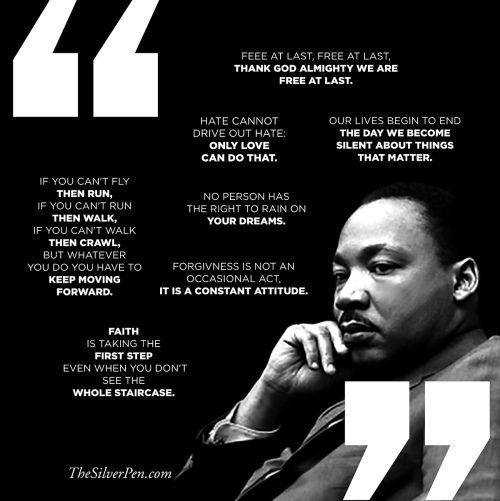 Martin Luther King Day 2015 is a very special day. In addition to taking time to personally reflect on race relations, freedom, and peace, it is a phenomenal opportunity to teach our children valuable lessons about our history. In fact, the Silver Lining is that teachers all over the country are finding ways to talk about the legacy of the Rev. Martin Luther King Jr. First thing this morning, Excitedly Eight and I watched his “I Have a Dream” speech. I get teary every time I watch and/or read it. Here it is below. I hope that you enjoy it as much as we always do!
Martin Luther King Day 2015 is a very special day. In addition to taking time to personally reflect on race relations, freedom, and peace, it is a phenomenal opportunity to teach our children valuable lessons about our history. In fact, the Silver Lining is that teachers all over the country are finding ways to talk about the legacy of the Rev. Martin Luther King Jr. First thing this morning, Excitedly Eight and I watched his “I Have a Dream” speech. I get teary every time I watch and/or read it. Here it is below. I hope that you enjoy it as much as we always do!
Martin Luther King, Jr.
“I am happy to join with you today in what will go down in history as the greatest demonstration for freedom in the history of our nation. Five score years ago, a great American, in whose symbolic shadow we stand today, signed the Emancipation Proclamation. This momentous decree came as a great beacon light of hope to millions of Negro slaves who had been seared in the flames of withering injustice. It came as a joyous daybreak to end the long night of their captivity.
“But one hundred years later, the Negro still is not free. One hundred years later, the life of the Negro is still sadly crippled by the manacles of segregation and the chains of discrimination. One hundred years later, the Negro lives on a lonely island of poverty in the midst of a vast ocean of material prosperity. One hundred years later, the Negro is still languished in the corners of American society and finds himself an exile in his own land. And so we’ve come here today to dramatize a shameful condition.
“In a sense we’ve come to our nation’s capital to cash a check. When the architects of our republic wrote the magnificent words of the Constitution and the Declaration of Independence, they were signing a promissory note to which every American was to fall heir. This note was a promise that all men, yes, black men as well as white men, would be guaranteed the ‘unalienable Right’ of ‘Life, Liberty and the pursuit of Happiness.’ It is obvious today that America has defaulted on this promissory note, insofar as her citizens of color are concerned. Instead of honoring this sacred obligation, America has given the Negro people a bad check, a check which has come back marked ‘insufficient funds.’
“But we refuse to believe that the bank of justice is bankrupt. We refuse to believe that there are insufficient funds in the great vaults of opportunity of this nation. And so, we’ve come to cash this check, a check that will give us upon demand the riches of freedom and the security of justice.
“We have also come to this hallowed spot to remind America of the fierce urgency of Now. This is no time to engage in the luxury of cooling off or to take the tranquilizing drug of gradualism. Now is the time to make real the promises of democracy. Now is the time to rise from the dark and desolate valley of segregation to the sunlit path of racial justice. Now is the time to lift our nation from the quicksands of racial injustice to the solid rock of brotherhood. Now is the time to make justice a reality for all of God’s children.
“It would be fatal for the nation to overlook the urgency of the moment. This sweltering summer of the Negro’s legitimate discontent will not pass until there is an invigorating autumn of freedom and equality. Nineteen sixty-three is not an end, but a beginning. And those who hope that the Negro needed to blow off steam and will now be content will have a rude awakening if the nation returns to business as usual. And there will be neither rest nor tranquility in America until the Negro is granted his citizenship rights. The whirlwinds of revolt will continue to shake the foundations of our nation until the bright day of justice emerges.
“But there is something that I must say to my people, who stand on the warm threshold which leads into the palace of justice: In the process of gaining our rightful place, we must not be guilty of wrongful deeds. Let us not seek to satisfy our thirst for freedom by drinking from the cup of bitterness and hatred. We must forever conduct our struggle on the high plane of dignity and discipline. We must not allow our creative protest to degenerate into physical violence. Again and again, we must rise to the majestic heights of meeting physical force with soul force.
“The marvelous new militancy which has engulfed the Negro community must not lead us to a distrust of all white people, for many of our white brothers, as evidenced by their presence here today, have come to realize that their destiny is tied up with our destiny. And they have come to realize that their freedom is inextricably bound to our freedom.
“We cannot walk alone. And as we walk, we must make the pledge that we shall always march ahead. We cannot turn back.
“There are those who are asking the devotees of civil rights, ‘When will you be satisfied?’ We can never be satisfied as long as the Negro is the victim of the unspeakable horrors of police brutality. We can never be satisfied as long as our bodies, heavy with the fatigue of travel, cannot gain lodging in the motels of the highways and the hotels of the cities. We cannot be satisfied as long as the Negro’s basic mobility is from a smaller ghetto to a larger one. We can never be satisfied as long as our children are stripped of their self-hood and robbed of their dignity by signs stating: ‘For Whites Only.’ We cannot be satisfied as long as a Negro in Mississippi cannot vote and a Negro in New York believes he has nothing for which to vote. No, no, we are not satisfied, and we will not be satisfied until ‘justice rolls down like waters, and righteousness like a mighty stream.’
“I am not unmindful that some of you have come here out of great trials and tribulations. Some of you have come fresh from narrow jail cells. And some of you have come from areas where your quest — quest for freedom left you battered by the storms of persecution and staggered by the winds of police brutality. You have been the veterans of creative suffering. Continue to work with the faith that unearned suffering is redemptive. Go back to Mississippi, go back to Alabama, go back to South Carolina, go back to Georgia, go back to Louisiana, go back to the slums and ghettos of our northern cities, knowing that somehow this situation can and will be changed.
“Let us not wallow in the valley of despair, I say to you today, my friends. And so even though we face the difficulties of today and tomorrow, I still have a dream. It is a dream deeply rooted in the American dream.
“I have a dream that one day this nation will rise up and live out the true meaning of its creed: ‘We hold these truths to be self-evident, that all men are created equal. I have a dream that one day on the red hills of Georgia, the sons of former slaves and the sons of former slave owners will be able to sit down together at the table of brotherhood.
“I have a dream that one day even the state of Mississippi, a state sweltering with the heat of injustice, sweltering with the heat of oppression, will be transformed into an oasis of freedom and justice. I have a dream that my four little children will one day live in a nation where they will not be judged by the color of their skin but by the content of their character.
“I have a dream today! I have a dream that one day, down in Alabama, with its vicious racists, with its governor having his lips dripping with the words of ‘interposition’ and ‘nullification’ — one day right there in Alabama little black boys and black girls will be able to join hands with little white boys and white girls as sisters and brothers.
“I have a dream today! I have a dream that one day every valley shall be exalted, and every hill and mountain shall be made low, the rough places will be made plain, and the crooked places will be made straight; ‘and the glory of the Lord shall be revealed and all flesh shall see it together.’
“This is our hope, and this is the faith that I go back to the South with. With this faith, we will be able to hew out of the mountain of despair a stone of hope. With this faith, we will be able to transform the jangling discords of our nation into a beautiful symphony of brotherhood. With this faith, we will be able to work together, to pray together, to struggle together, to go to jail together, to stand up for freedom together, knowing that we will be free one day.
“And this will be the day — this will be the day when all of God’s children will be able to sing with new meaning: My country ’tis of thee, sweet land of liberty, of thee I sing. Land where my fathers died, land of the Pilgrim’s pride, from every mountainside, let freedom ring!’ And if America is to be a great nation, this must become true.
“And so let freedom ring from the prodigious hilltops of New Hampshire. Let freedom ring from the mighty mountains of New York. Let freedom ring from the heightening Alleghenies of Pennsylvania. Let freedom ring from the snow-capped Rockies of Colorado. Let freedom ring from the curvaceous slopes of California. But not only that: Let freedom ring from Stone Mountain of Georgia. Let freedom ring from Lookout Mountain of Tennessee. Let freedom ring from every hill and molehill of Mississippi. From every mountainside, let freedom ring.
“And when this happens, when we allow freedom ring, when we let it ring from every village and every hamlet, from every state and every city, we will be able to speed up that day when all of God’s children, black men and white men, Jews and Gentiles, Protestants and Catholics, will be able to join hands and sing in the words of the old Negro spiritual: ‘Free at last! Free at last! Thank God Almighty, we are free at last!’”
The post Martin Luther King Day 2015 appeared first on The Silver Pen.
9 Promises That Can Bring Happiness
Have you seen these 9 promises that can bring happiness by John Wooden? I pretty much love anything that John Wooden said or did. Nicknamed the “Wizard of Westwood,” as head coach at UCLA he won TEN NCAA national championships in a 12-year period—seven in a row— which was (& I believe still is!) an unprecedented feat. Oh AND he was named national coach of the year six times. Talk about an inspiration! The coolest thing about Coach John Wooden is that he was known as much for his life lessons as he was for his ability to motivate and inspire. It was as if basketball was simply a conduit to and example for the best way to live life, as evidenced by his 9 promises above. I have actually printed these promises and taped them to my computer. Heaven knows that I need as much inspiration as I can get!
The post 9 Promises That Can Bring Happiness appeared first on The Silver Pen.
January 16, 2015
This Weekend: Choose Energy
This weekend, I am focusing on refueling my tank and finding energy. It has been a long, lonnnnnnng couple of weeks and heaven knows that I am in dire need of energy. I’m not an energy shot or caffeine kind of gal (not because I am holier than thou, but because it has never worked for me!). Some of the things that work best for me include:
Power napping.
Eat regularly (every 2-3 hours). Eating every few hours: blood sugar stability contributing to weight loss and/or weight management, a happier attitude and improved memory
Drink lots of water. I wish I knew why this worked, but when I am well hydrated, I have more energy.
Laugh. Laughter is proven to get rid of stress and studies suggest that laughing can also boost energy levels as well!
End every shower with cold water. You won’t believe how energizing this is!
What are you up to this weekend? How will you find energy?
The post This Weekend: Choose Energy appeared first on The Silver Pen.
Cryo-What? Cryotherapy
Ever since I had my hysterectomy, I have been doing cryotherapy on a regular basis. Ever heard of it? Didn’t think so. It is a complementary therapy that is new to the United States and I have to tell you that I love love love it! Here is the 4-1-1 on it. I HIGHLY encourage checking it out.* It has definitely been a game changer for me!
What is it?
Whole-body cryotherapy is a technique used to rapidly lower the skin surface temperature to about 32 degrees fahrenheit. The brain reacts to this extreme change by stimulating the regulatory functions of the body and releasing anti-inflammatory proteins and endorphines into the bloodstream. Now the Silver Lining is that you’re only freezing for (usually) 2 minutes or less. That’s it. I put on some really bad 80’s song and bee-bop through the whole thing.
How does it work?
A patient steps into a cryosauna where gasiform nitrogen is used to rapidly lower skin temperature levels. The cryosauna temperature ranges between -238 degrees fahrenheit to -274 degrees fahrenheit for about two to three minutes of treatment. While it may seem that the cryosauna is similar to the effects of an ice bath (but much more complicated!) it actually results in a very different response from the body. 15 minutes in an icebath causes the body to move blood to the extremities and results in a chilled lowering of the body’s core temperature. Two to three minutes in a cryosauna where dry cold only reaches the top layers of skin causes the body to release anti-inflammatory proteins and endorphins resulting in super-charged blood. Every time I do it, I feel like I have had 5 espresso’s. I have TONS of energy and feel completely amazing.
What are the benefits?
Skin: When the outter skin is briefly “frozen”, the body increases the production of collahen in deeper layers of the skin, which results in skin regaining elasticity, becoming smoother, even-toned, and improving conditions of cellulite and skin aging.
Endocrine: The extreme cold temperatures cause the body to increase its metabolic rate in order to produce heat. This effect lasts 5-8 hours after the procedure causing the body to burn up to 500-800 kcal. Another reaction to the freezing temperatures is the body’s release of hormones that have pain relieving and anti-inflammatory properties.
Musculoskeletal: the anti-inflammatory effects of cryotherapy drastically improve joint disorders such as osteroarthritis and rheumatoid. Athletes are able to recover from injuries much quicker and improve their performance when using cryotherapy.
Immune System: Cryotherapy increases white blood cell count, especially lymphocytes and monocytes, which improves the immune system.
Who?
Cryotherapy is ideal for athletes seeking muscle recovery, people with chronic pain and inflammatory conditions, and those seeking weight loss and skin rejuvenation. Professional athletes in the NBA, MLB, NHL, and NFL have made a critical part of their recovery treatments. Cryotherapy is also used on post-surgery patients to accelerate healing and reduce pain without the side effects of pain medications. This is why I used it and it did wonders for me.
*Please don’t do ANYTHING without the knowledge and blessing of your health care team!
The post Cryo-What? Cryotherapy appeared first on The Silver Pen.

